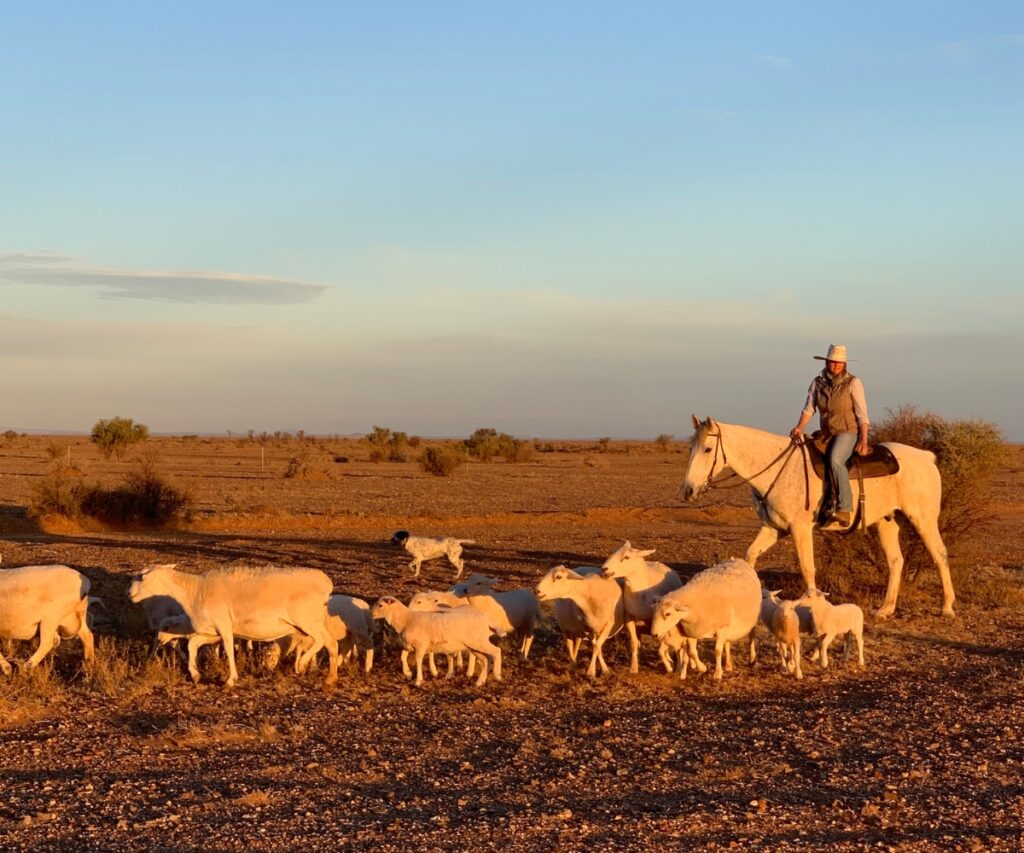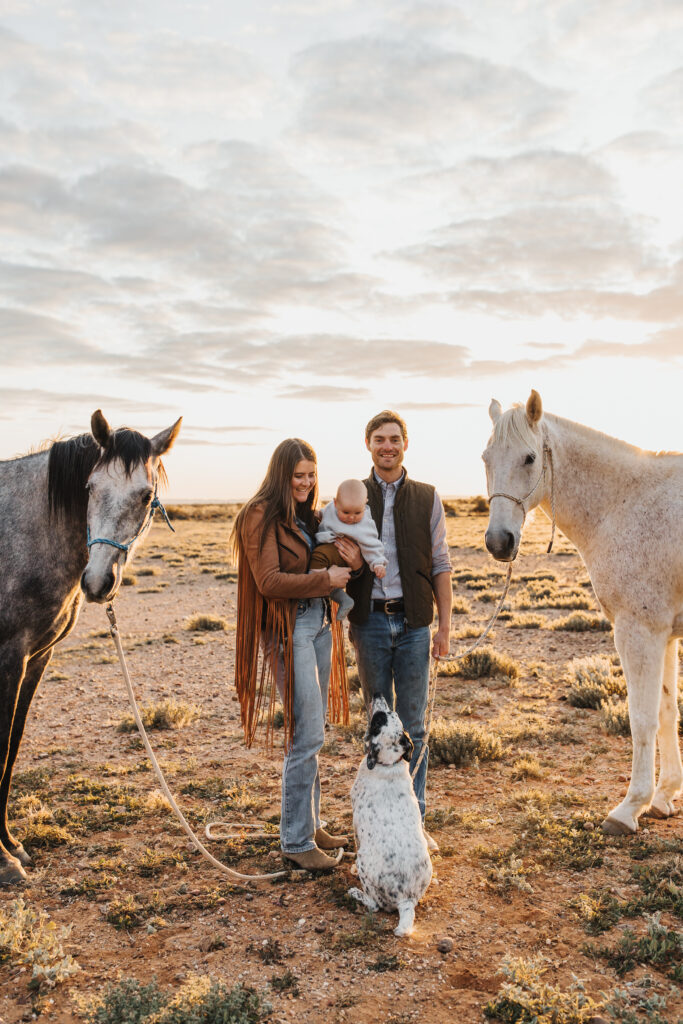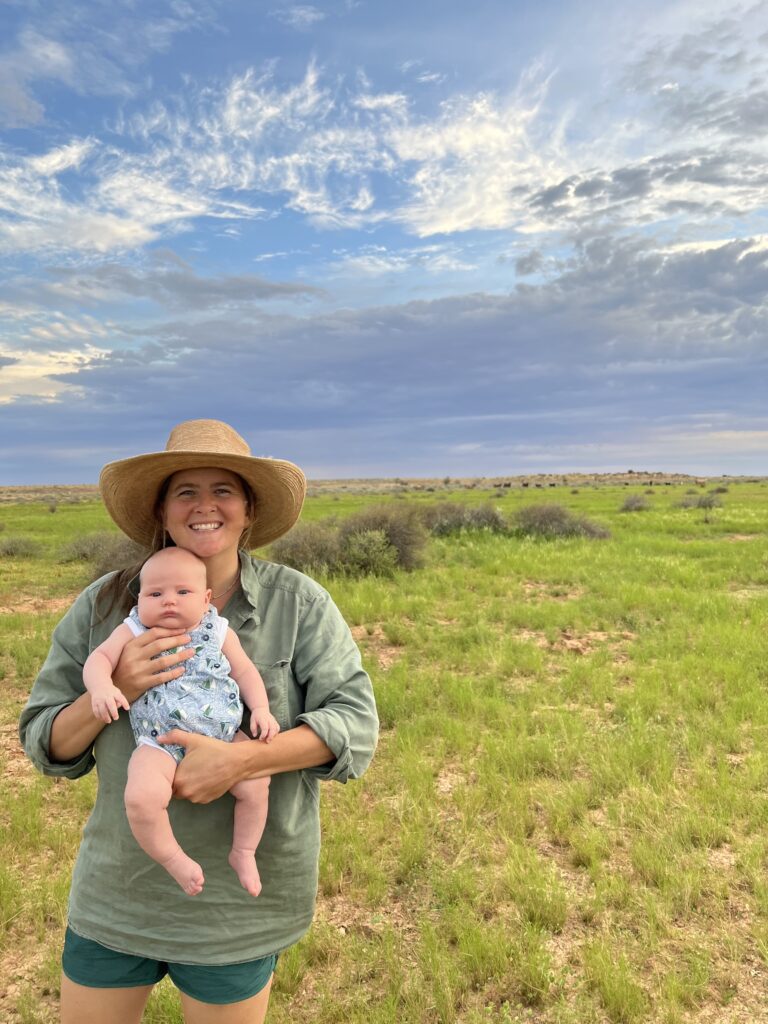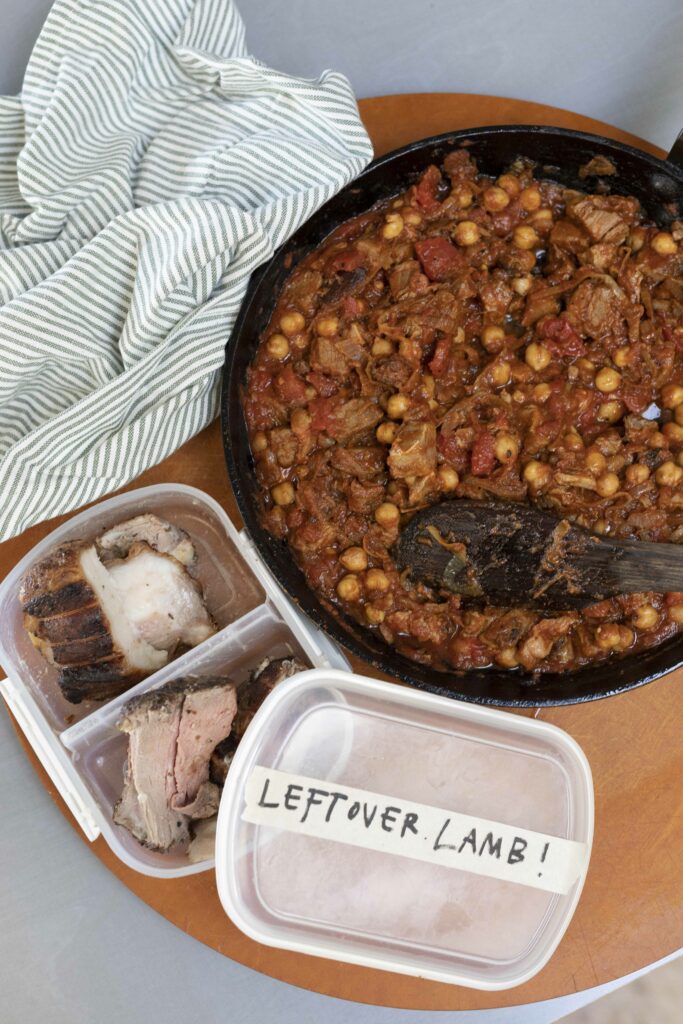This is part of a Cornersmith x Australian Farmers series showcasing Aussie grown foods. It’s a bit like a fork with three prongs. This is the part where you get to meet the farmer who raises sheep. The next prong is learning what to do with leftover lamb and the third is recipe inspiration. We hope you enjoy the ride!
Ellen Litchfield is a pastoralist on Wilpoorinna Station near Marree in northern South Australia where she lives with her husband Blake, son Winston and her parents Lyn and Gordon. Together, they grow organic beef and lamb.
How long has Wilpoorina been in your family? My grandparents moved to the area in the late 1950s to manage Mundowdna Station. They purchased the neighbouring station, Wilpoorinna, in 1972 and my parents moved here. My husband and I moved back to the property in 2018.
What’s your role? I help out with all facets of the family business as well as look after our son Winston. My favourite job on the property is moving the cattle or sheep with our stockhorses, we love using horses because it keeps the cattle and sheep very calm.

In an average year, how many livestock do you run? We run the livestock together with my brother and his wife on a neighbouring property and my uncle and aunty on Mundowdna, so the cattle and sheep have plenty of space to roam around. Because our rainfall fluctuates a lot it is very variable how many animals we keep but generally around 5,000 cattle and 10,000 sheep.
Has anything changed on your farm in your time? There has been so much change on our property just in my lifetime, we have changed from Merino sheep to wool shedding sheep. They are much more efficient and well adapted to arid conditions. We have also seen a lot of technology advances with remote telemetry meaning we can remotely monitor watering points instead of driving two hours to check them.
The introduction of the organic certification scheme was also a big change for us that has allowed us to differentiate ourselves from other producers. We are part of the National Association for Sustainable Agriculture so the certification scheme is a great reminder for us to make sure we are recording each year how we are meeting are environmental and social goals.

What’s the best thing about what you do? I love being outside and working with animals, before coming back to the property I worked as a veterinarian so I love that now I can spend all day looking after my own animals. It is also always changing from sheep work to book work to advocating for our industry, every day is different.
What’s important to you when growing food? We want to ensure we are delivering a nutritious product that is grown in harmony with nature. The unique thing about the stations out here is they are on pastoral leases so part of our job is also to look after the native biodiversity whilst creating a perfect protein source. That is what I love about ruminants, they can grow in harmony with nature and even help the native environment. It is the only protein source that can do that at this scale.
Can you outline the lifecycle of a sheep while it’s on farm? Our lambs are born out in the paddocks with their mothers, then we go around mustering into the watering points so they don’t have too far to walk. They are given an eartag and the boys are castrated to make sure there isn’t too much fighting. And then the next time they come into the yards is to be processed so they live a very natural life out in very large paddocks – over 100,000 acres each paddock (that’s more than half of Singapore!).

How long do the sheep stay on your property? Lamb means the animal is 12 months or younger but a surprising fact is that Mutton is actually very delicious and what we eat on the property! It is hard to find at a supermarket because most people like lamb but if you have a good butcher try to get some Australian mutton, it has a little bit more flavour and much, much more economical.
Thinking about nutrition and “You are what you eat ate”, what do your sheep eat? All our sheep and cattle graze native pastures only, so they have a wide array of nutrients and we do not need to supplement them with anything. That is one of the really unique things about the rangelands across Australia is you can get a really nutritious protein source grown from native pastures. It also means we are passionate about looking after our native lands because without them we couldn’t produce any food.
How do we buy lamb grown by Australian producers like you? Look for organic Australian lamb and it might be some of ours!
My mother’s mutton minestrone
By Ellen Litchfield
- 1.5kg mutton on the bone (neck chops are good for this or some other sinewy cut of meat, cut into chunks)
- 6 cups cold water
- 1 brown onion, chopped
- 2 carrots, peeled and chopped
- 2 stalks celery, chopped
- 4 large ripe tomatoes
- 1tsp chilli paste
- 2 tbs tomato paste
- 2 potatoes, peeled and quartered
- 1 cup macaroni
- 2 cups baby spinach
- Salt and pepper to taste Parmesan to serve
- Place mutton pieces into cold water and bring slowly to the boil. Add onion, carrots, celery, tomatoes, chilli and tomato paste.
- Simmer for at least 1 hour, if you can do longer you will make better use of the nutrients coming out of the bones.
- Meat should peel off the bones when done. Season to taste. Then add potatoes and macaroni, cook for a further 30 minutes.
- Just before you serve, plunge the spinach in. Serve with a sprinkling of parmesan.

Feeling inspired and enlightened?! Find out how to make your lamb go further by learning how to store it and try the clean-out-the-fridge recipe straight from the Cornersmith kitchen. You can also check out our tips and tricks for saving money and doing your bit to reduce food waste with the other foods in this series: Bread, carrots, leafy greens, oranges and cheese.







































Thanks. Best wishes.